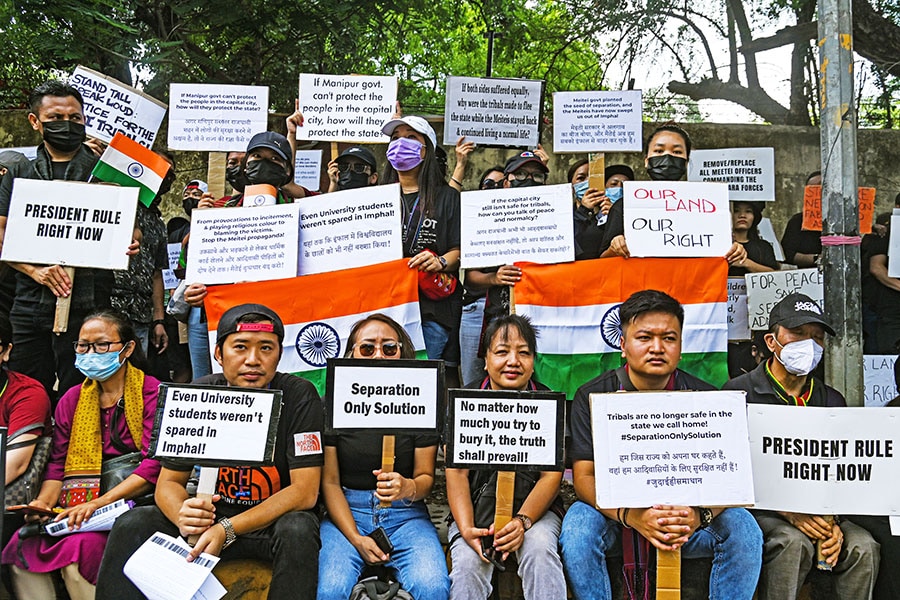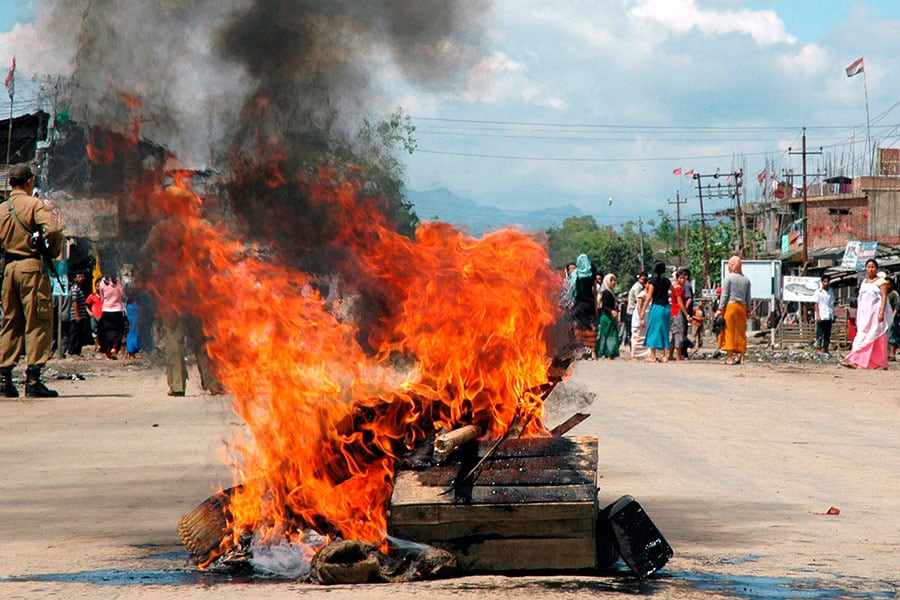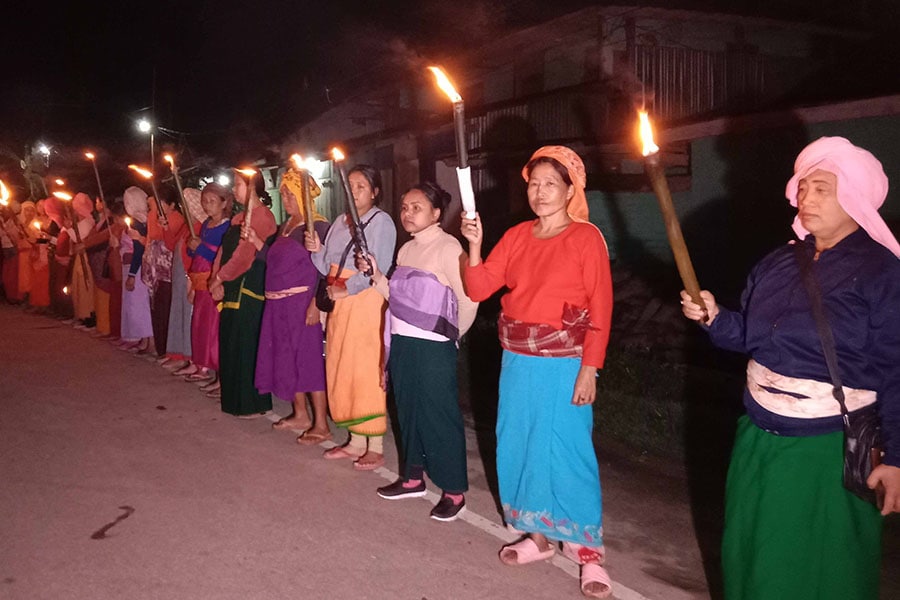
Explainer: Making sense of the unrest in Manipur
The clashes between the Meiteis and the Kukis have resulted in over 120 deaths and burning down of at least 4,000 buildings so far. More than 40,000 people are currently displaced in relief camps in the state
 Members of the Kuki tribe hold Indian Flags and Placards in a protest against the killings of tribals in the North Eastern state of Manipur, in New Delhi, India on May 31, 2023; Image: Kabir Jhangiani/NurPhoto via Getty Images
Members of the Kuki tribe hold Indian Flags and Placards in a protest against the killings of tribals in the North Eastern state of Manipur, in New Delhi, India on May 31, 2023; Image: Kabir Jhangiani/NurPhoto via Getty Images
Over the last 47 days, the state of Manipur in Northeast India has witnessed ethnic clashes primarily between two local communities, the Meiteis and Kukis. The violence has resulted in over 120 deaths and the burning down of at least 4,000 buildings, which include homes and religious sites belonging to both communities. More than 40,000 people are currently displaced in relief camps in the state. These numbers might go up, as the crisis continues. There have been clashes in the past, but not at the current scale.
How did the dispute flare up?
For almost a decade, the Meitei community has been fighting to be included in the Scheduled Tribes (ST) list. On March 27, the Manipur High Court directed the state government to consider the request of the community within four weeks. The court asked that the recommendation be sent to the Centre for consideration. While hearing a petition filed by members of the Meitei Tribe Union, a single-judge bench of the Manipur High Court, comprising Acting Chief Justice MV Muralidaran, decided that it was appropriate to direct the state government to consider the representation for inclusion expeditiously. This order led to concern among non-Meitei Manipur residents who are already on the Scheduled Tribes list. On May 3, a protest erupted against the outcome that the Meiteis would be included in the ST list.
 Onlookers stand near a fire started on a street in Moreh town in the northeastern Indian state of Manipur June 12, 2007; Image: Reuters
Onlookers stand near a fire started on a street in Moreh town in the northeastern Indian state of Manipur June 12, 2007; Image: Reuters
Why are the Meiteis demanding the Scheduled Tribes tag?
The Imphal Valley is dominated by 53 percent Meiteis. There are a total of five districts in the valley. Meiteis occupy about 10 percent of the land area of Manipur. The hill districts are dominated by the Kuki and Naga tribes, who account for 41.29 percent of the total population. The valley is the most populous part of the state, and people from many tribes, as well as other parts of India, live there. The rest of the local population is dispersed over 90 percent of the land area in the hill districts, which also has reserve forest areas.
The Meiteis are not entitled to occupy land beyond the valley in the hill districts as they don't have Scheduled Tribes status. The Kukis have been demanding a separate administrative area for themselves. The Kuki militant groups have been fighting for a separate state within the Union of India.
The majority, mainly Meitei communities, reportedly want special tribal status to access benefits like cheap loans, farming rights, and job quotas. Tribal groups are trying to prevent that as they feel that this would be an uneven benefit given to a community that has otherwise enjoyed many privileges in the state where it has dominated the legislative assembly and has historically been in power.









